
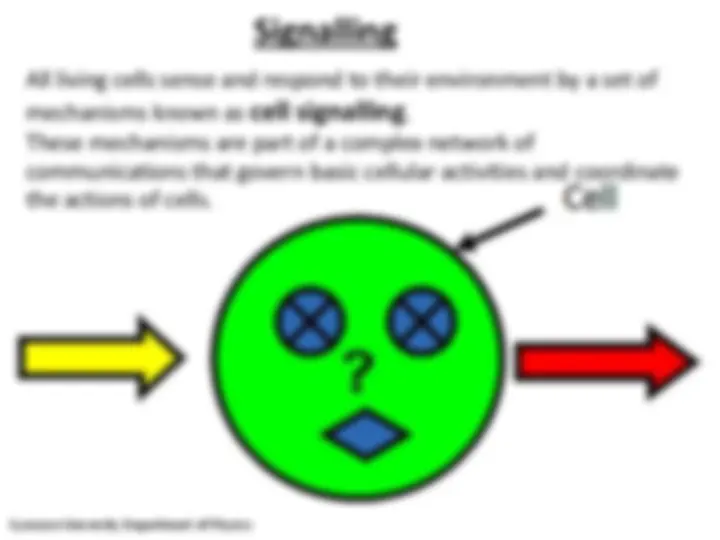
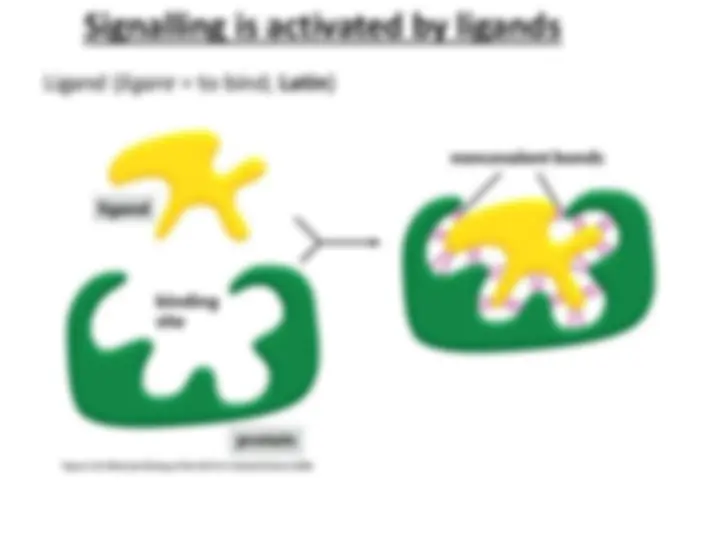
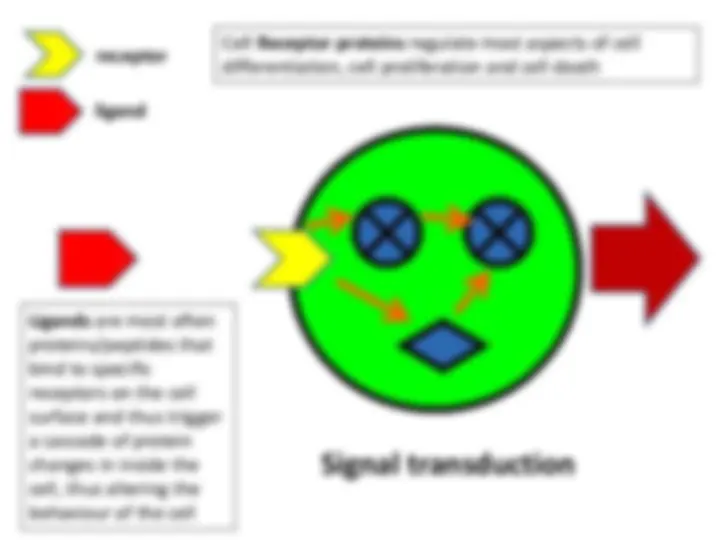
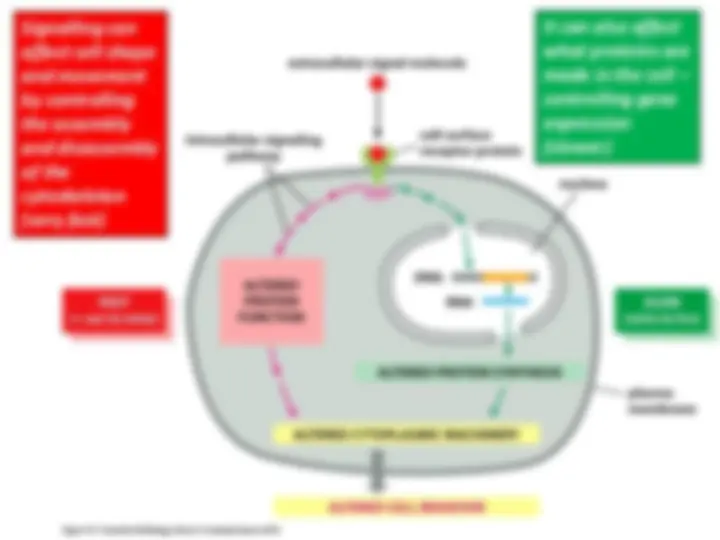

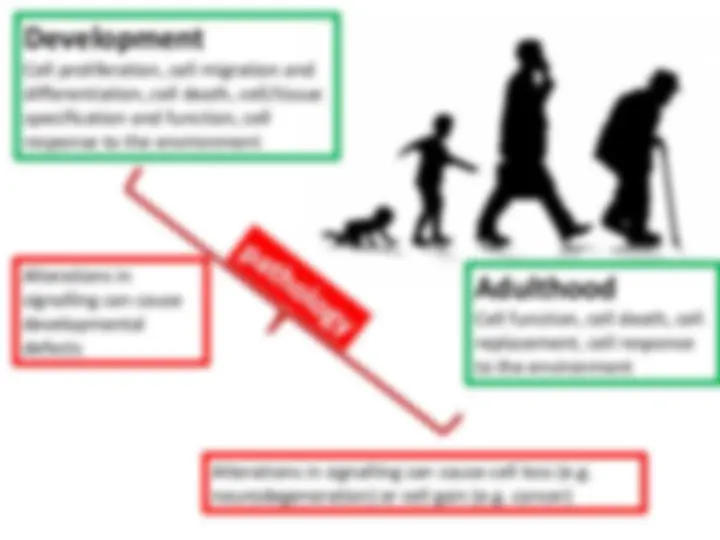
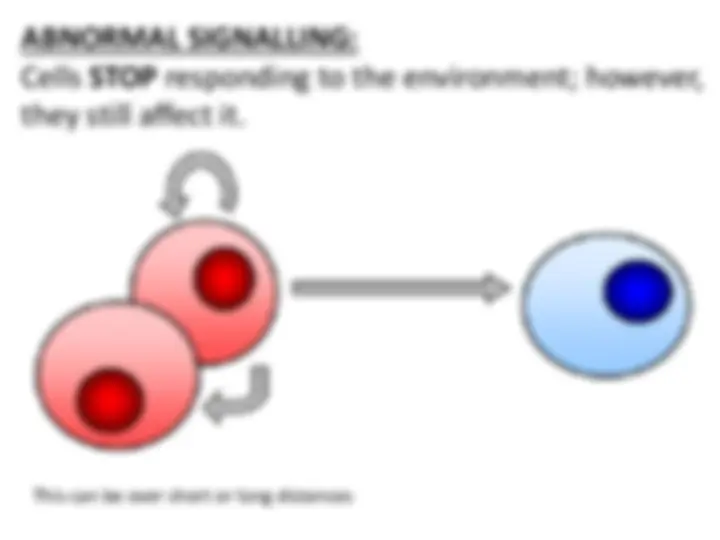
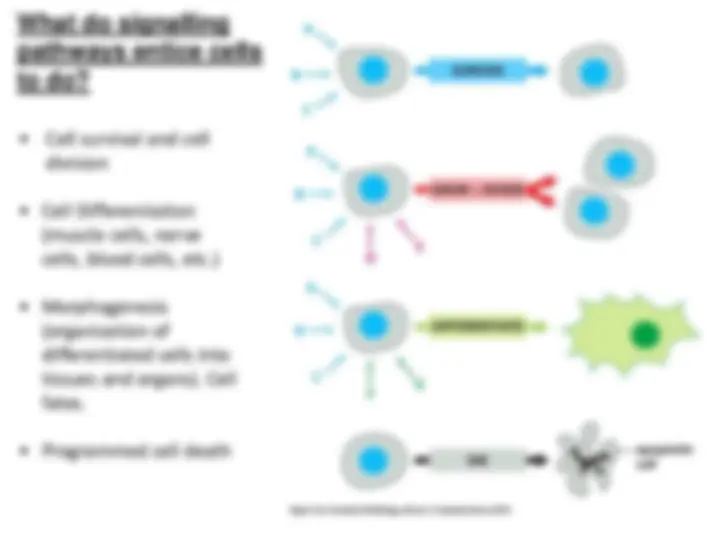
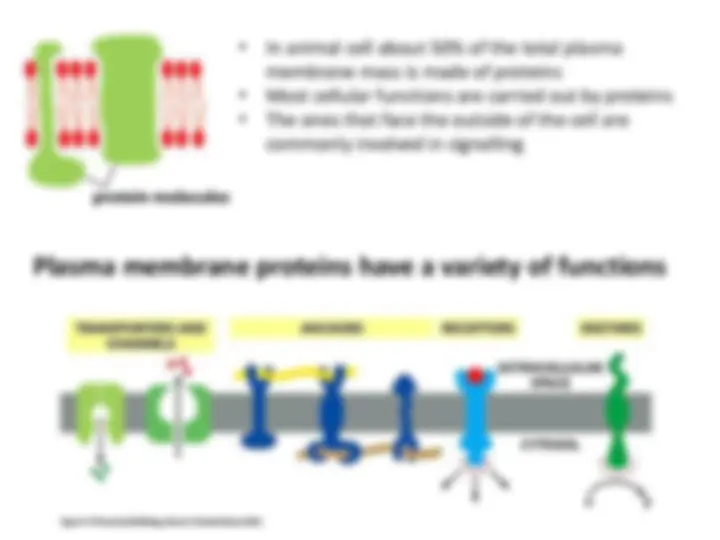
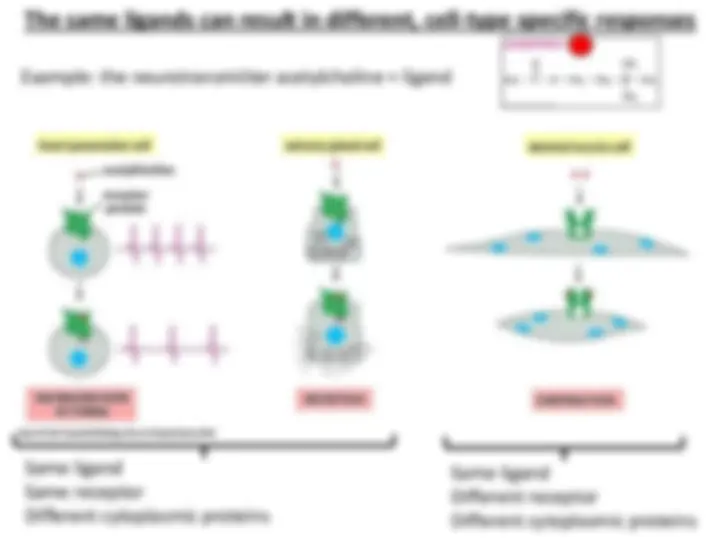
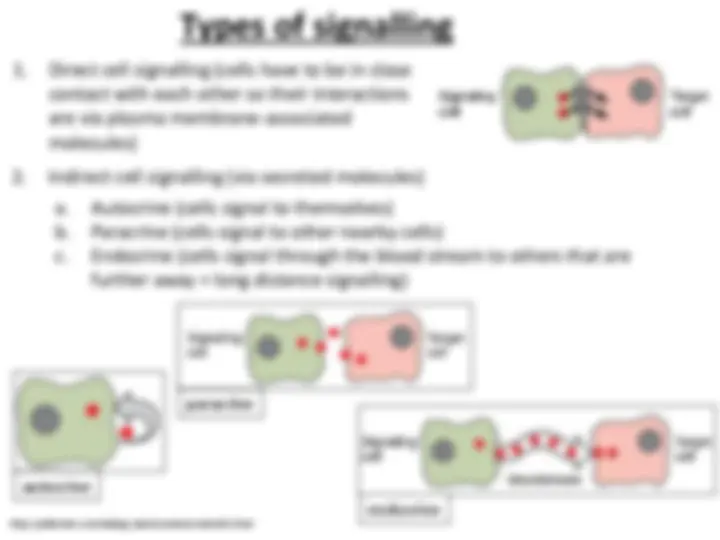
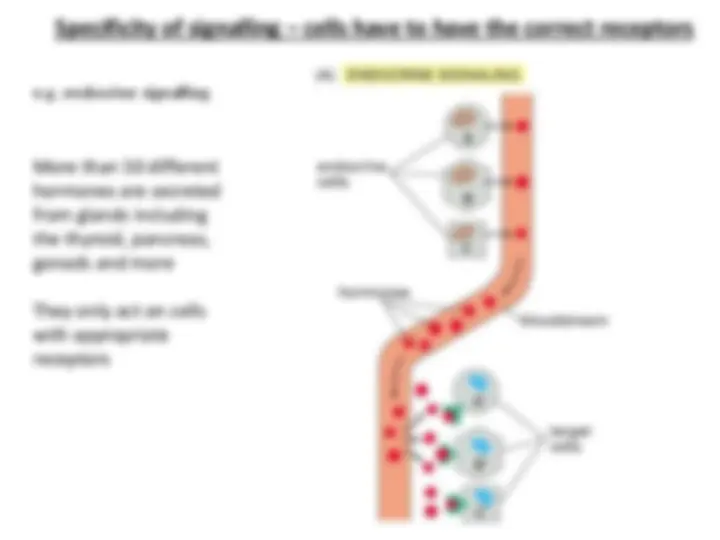
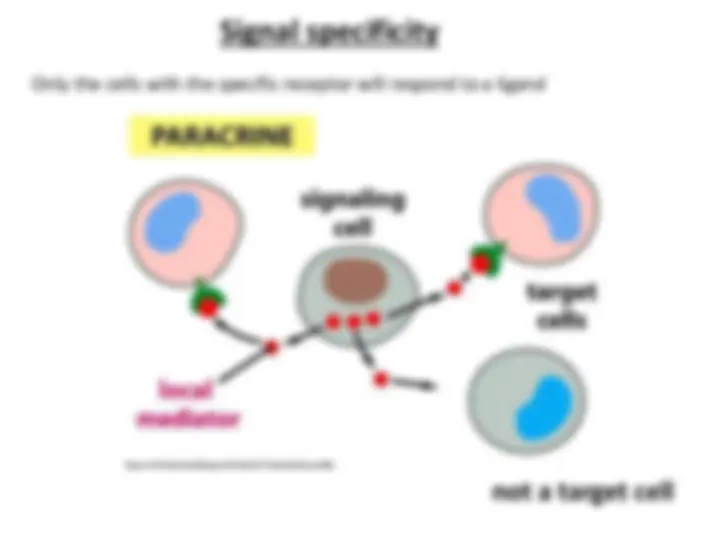
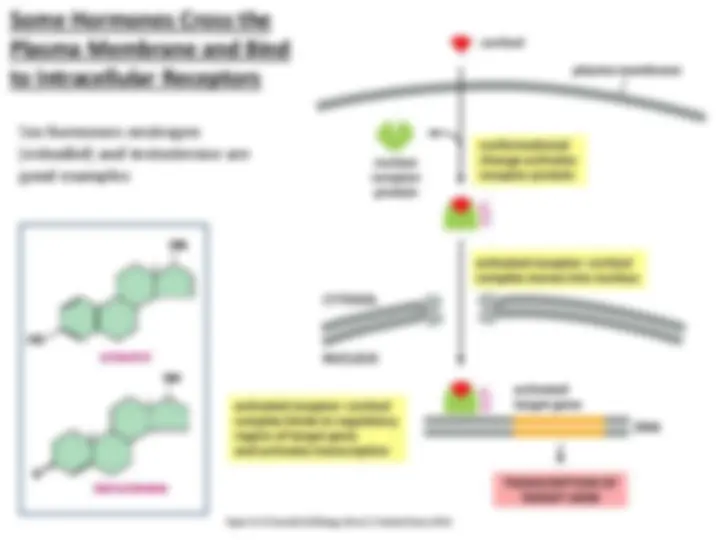
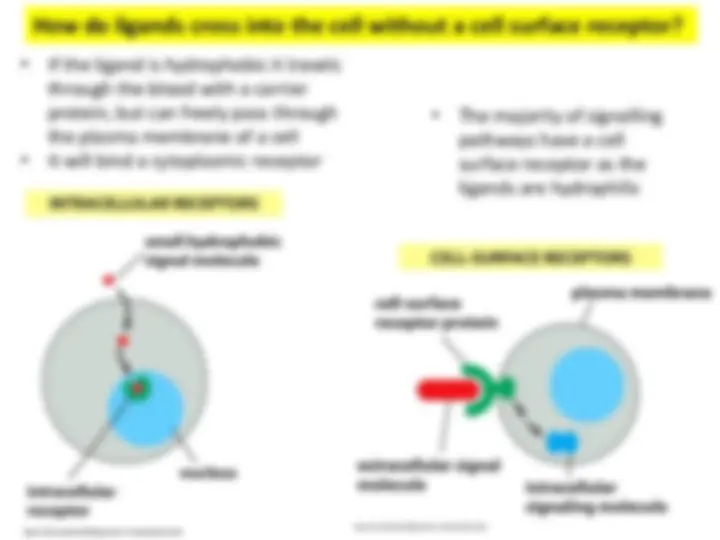
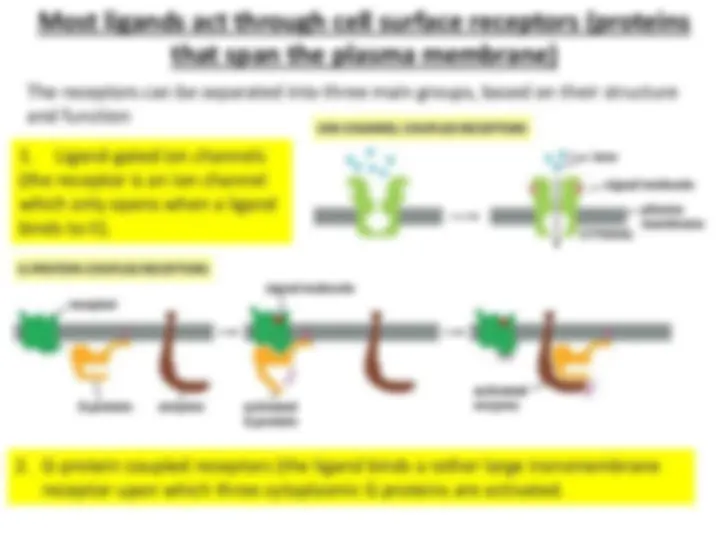
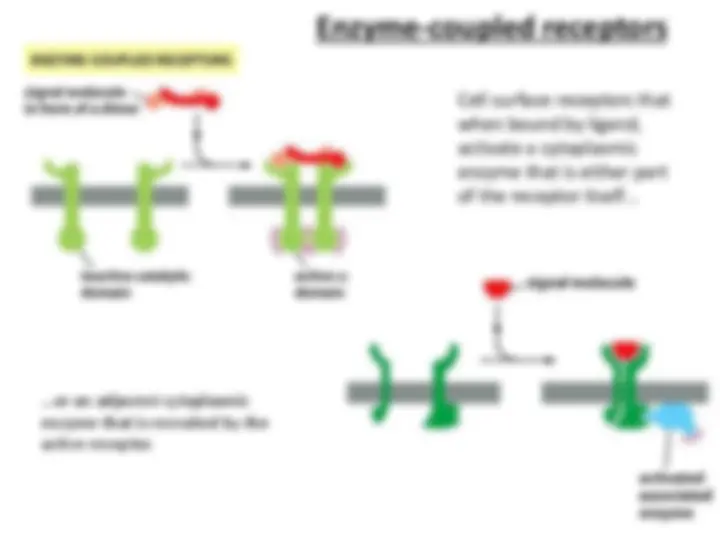
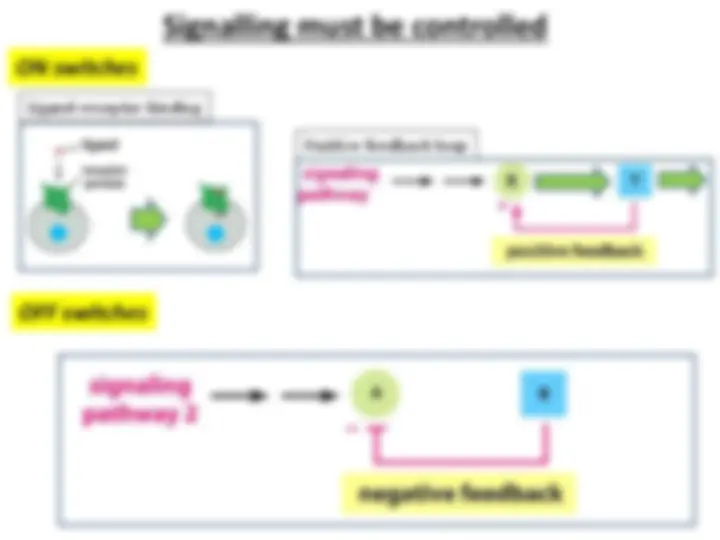
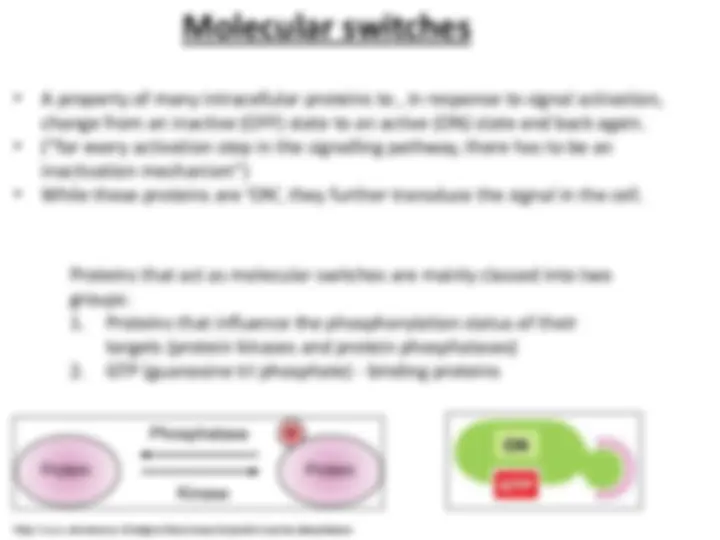
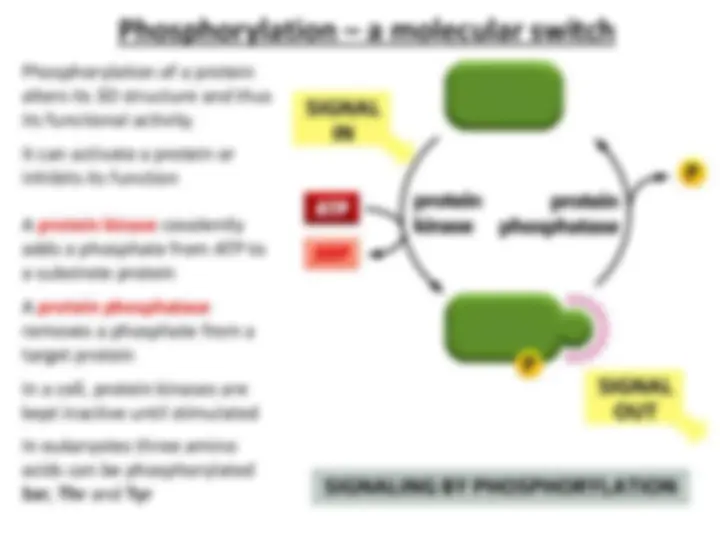
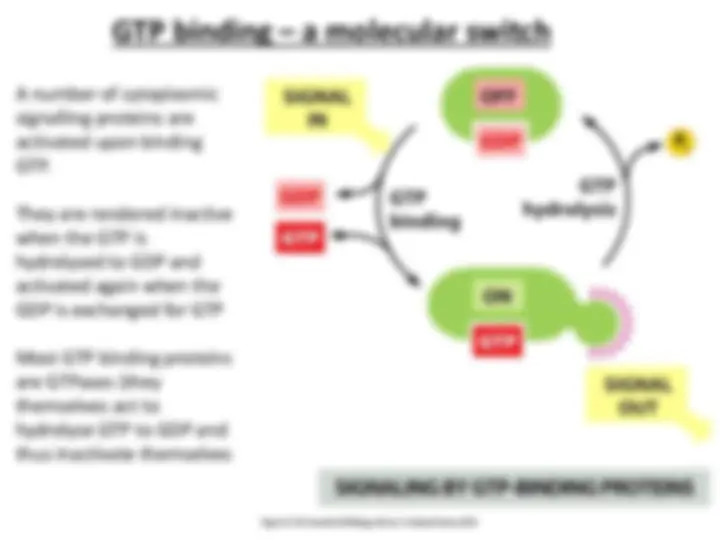
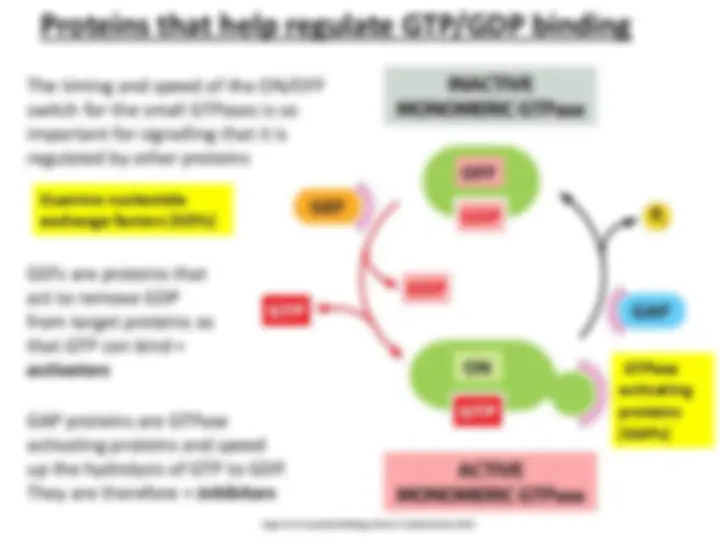
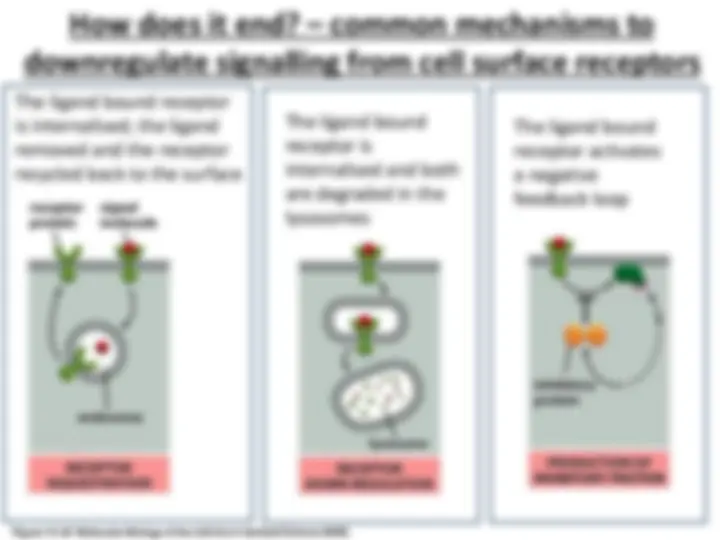
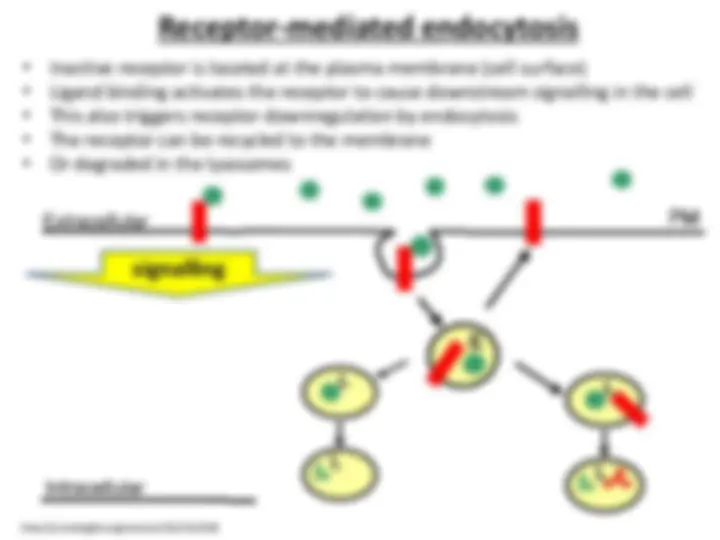
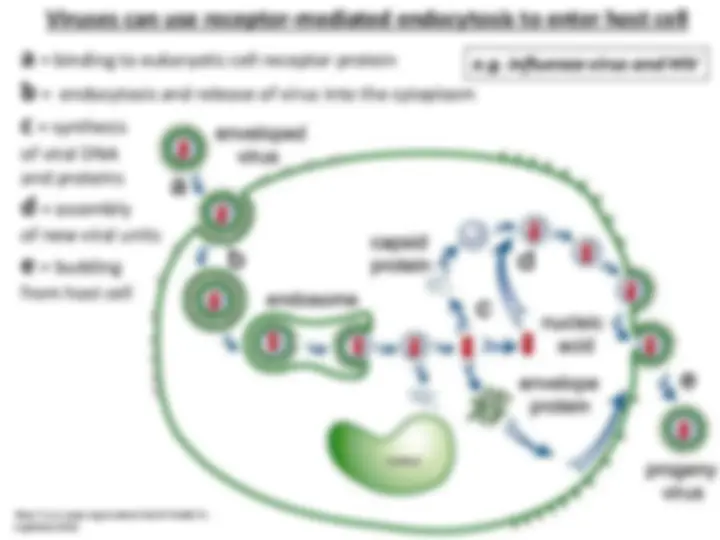
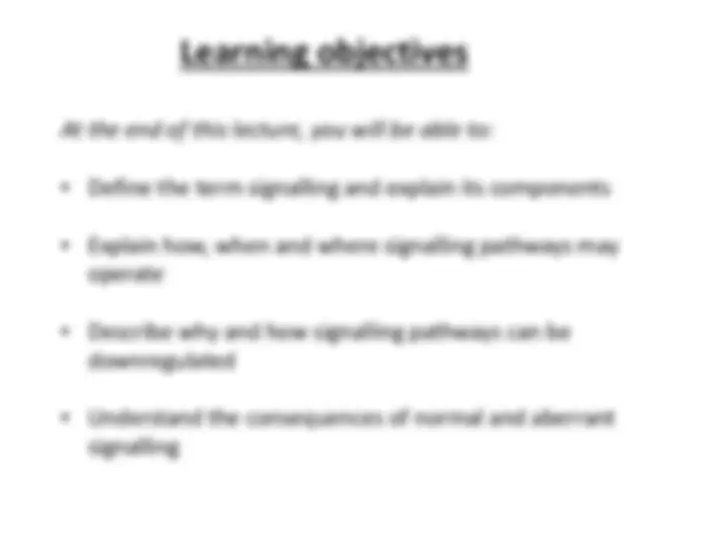
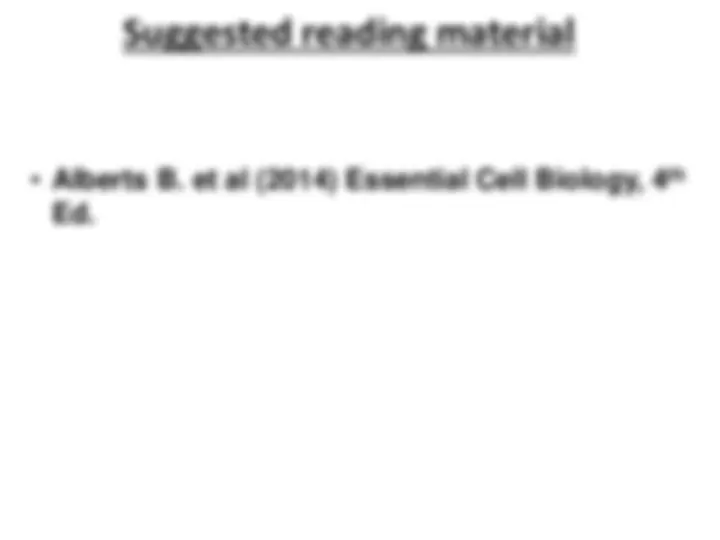


Study with the several resources on Docsity

Earn points by helping other students or get them with a premium plan


Prepare for your exams
Study with the several resources on Docsity

Earn points to download
Earn points by helping other students or get them with a premium plan
Community
Ask the community for help and clear up your study doubts
Discover the best universities in your country according to Docsity users
Free resources
Download our free guides on studying techniques, anxiety management strategies, and thesis advice from Docsity tutors
very useful and easy to understand
Typology: Lecture notes
1 / 35

This page cannot be seen from the preview
Don't miss anything!




























Aims
Signalling is activated by ligands
receptor
ligand
Signal transduction
Cell Receptor proteins regulate most aspects of cell differentiation, cell proliferation and cell death
Ligands are most often proteins/peptides that bind to specific receptors on the cell surface and thus trigger a cascade of protein changes in inside the cell, thus altering the behaviour of the cell
Regulation of the cytoskeleton is fast
No transcription or translation are needed for the initial response
Signalling can affect cell shape and movement by controlling the assembly and disassembly of the cytoskeleton (very fast)
It can also affect what proteins are made in the cell – controlling gene expression (slower)
Development Cell proliferation, cell migration and differentiation, cell death, cell/tissue specification and function, cell response to the environment
Adulthood Cell function, cell death, cell replacement, cell response to the environment
Alterations in signalling can cause developmental defects
Alterations in signalling can cause cell loss (e.g. neurodegeneration) or cell gain (e.g. cancer)
e.g. Development of the central nervous system (CNS) is hugely dependent on correct signalling between cells
ABNORMAL SIGNALLING:
Cells STOP responding to the environment; however,
they still affect it.
This can be over short or long distances
Many signalling pathways are activated by extracellular ligands binding cell surface receptors
Consequently, the receptor protein will trigger the activation of one or more cytoplasmic signalling molecules = signalling pathways; ONE IS SHOWN
Upon the activation of specific effector proteins (the ones that will actually cause the cell response), changes will be evident in the responding cell ( target cell responses ).
Once a receptor is activated (by binding to a ligand), this information is relayed through the cell by a cascade of molecular changes.
The cytoplasmic molecules (often proteins) that relay the information can amplify, transduce, integrate and distribute the incoming signal with the final result – a cellular change.
Types of signalling
http://philschatz.com/biology-book/contents/m44451.html
autocrine
paracrine
endocrine
More than 50 different hormones are secreted from glands including the thyroid, pancreas, gonads and more
They only act on cells with appropriate receptors
e.g. endocrine signalling